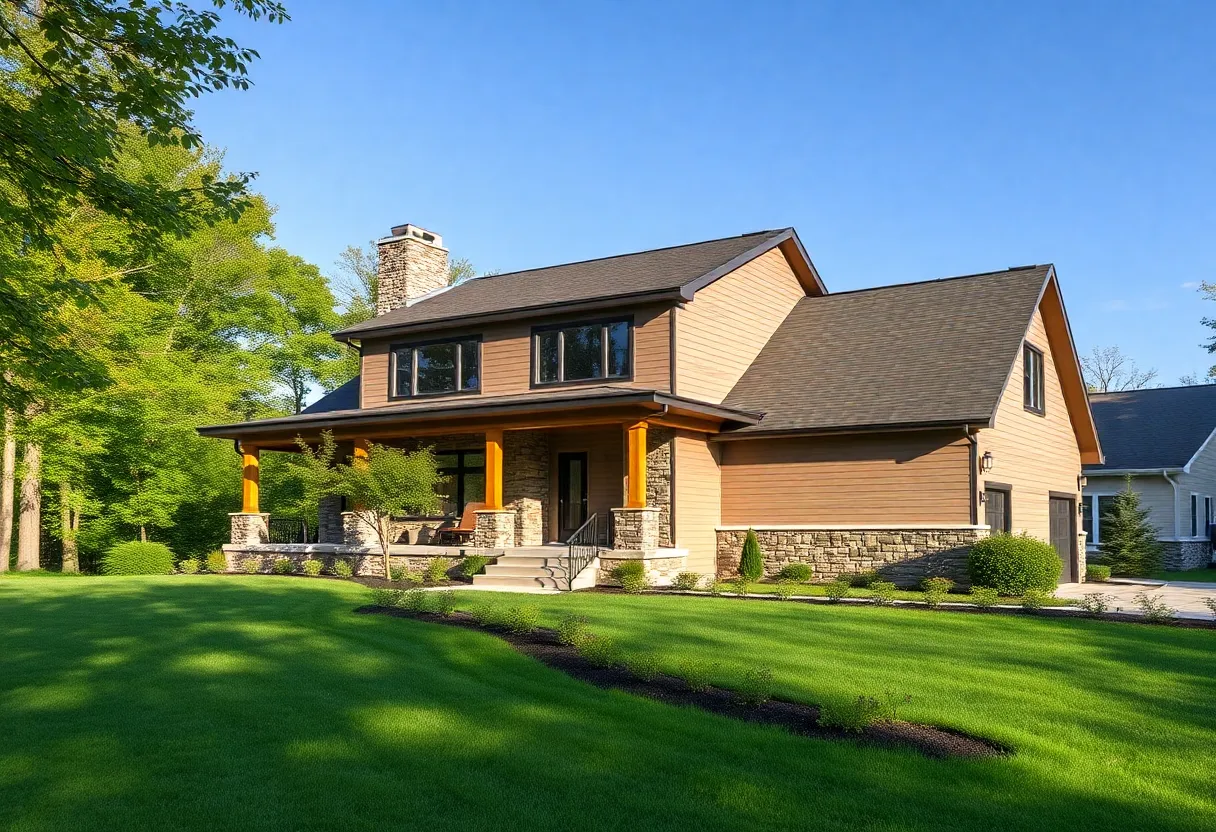How to Ensure Your Home’s Long-Term Durability: Essential Building Tips for Homeowners
Prioritize Quality Material Selection
Choosing high-quality building materials is the foundation of a durable home. Invest in materials designed to withstand environmental stresses, such as weather-resistant exterior siding, rust-proof fasteners, and durable roofing options. Opt for materials that have proven longevity and low maintenance requirements, especially in climates prone to harsh conditions. Considering sustainable or recycled materials can also enhance long-term resilience while reducing environmental impact.
Implement Expert Structural Design
Proper structural design is critical for long-term stability. Ensure your home’s framework adheres to local building codes, incorporating factors like seismic, wind, and snow load considerations. Engage qualified engineers or architects who can tailor the design to your environment, preventing unforeseen stress points. Regularly review and update plans to incorporate advances in structural engineering, strengthening your home’s ability to resist future challenges.
Focus on Effective Foundation Construction
The foundation bears the entire weight of your home. Use correct excavation techniques and select suitable foundation types—such as poured concrete slab, pier, or basement—based on soil conditions. Ensure proper compaction and moisture barriers are in place to reduce settlement and prevent water intrusion. Foundations should be inspected and tested for integrity during and after construction to ensure they meet safety standards.
Prioritize Proper Drainage and Water Management
Gutter and Downspout Maintenance
Effective drainage systems divert water away from your home’s structure. Regularly clean gutters and downspouts to prevent blockages that can cause water seepage. Ensure downspouts extend sufficiently away from the foundation to prevent erosion and dampness issues.
Landscape Grading
Adjust terrain slopes to direct water flow away from your building. Maintain a minimum 6-inch slope from the foundation for at least 3 to 6 feet. Proper grading reduces hydrostatic pressure on foundations and prevents basement flooding or mold growth.
Use Weather-Resistant Exterior Materials
Exterior components should resist moisture, UV exposure, and temperature fluctuations. Choose siding, roofing, and window frames made from weatherproof materials like fiber cement, metal, or vinyl. Apply protective sealants and coatings periodically to maintain their resilience. Proper installation of flashing and weatherproof barriers is essential to prevent water penetration.
Insulate Judiciously for Durability
Effective insulation improves energy efficiency and reduces condensation problems, which can cause structural damage over time. Select insulation types suitable for your climate, such as spray foam or rigid panels. Proper installation ensures seamless coverage, avoiding thermal bridging or gaps that can lead to deterioration.
Ensure Adequate Ventilation
Good ventilation controls moisture buildup within walls, attics, and basements. Install vents, soffits, and exhaust fans where necessary. Consistent airflow prevents mold, rot, and material degradation, directly influencing structural integrity and indoor air quality.
Conduct Routine Maintenance
Preventive upkeep is vital. Inspect roofs, gutters, windows, and doors regularly for signs of wear or damage. Address issues promptly—replacing cracked shingles, resealing leaks, or repairing cracks reduces the risk of water infiltration and structural deterioration. Schedule professional assessments periodically for a comprehensive evaluation of your home’s condition.
Address Moisture and Humidity Problems
Excess moisture fosters decay, mold, and corrosion. Install vapor barriers in crawl spaces and basements. Use dehumidifiers in humid climates. Proper ventilation and drainage are key to maintaining a dry environment, extending the lifespan of structural components and finishes.
Implement Fire-Resistant Building Practices
In areas prone to wildfires or heat waves, incorporate fire-resistant materials such as fiber cement or metal panels. Use non-combustible roofing and fireproof coatings. Create defensible space around your home by clearing combustible vegetation, reducing fire risk that could compromise structural integrity.
Incorporate Resilient Technologies and Innovations
Advanced building techniques can significantly enhance durability. Features such as steel framing, impact-resistant windows, and insulated concrete forms (ICFs) offer superior strength and longevity. Consider integrating smart systems for monitoring structural health, detecting early signs of deterioration, or water intrusion.
Choose Right Location and Site Preparation
A home’s site influences its durability. Select locations with stable soil and minimal risk of flooding, landslides, or erosion. Conduct soil tests to assess load-bearing capacity. Proper site preparation, including grading and soil stabilization, sets a solid foundation for long-term performance.
Protect Against Pest Infestations
Pests like termites and rodents can weaken structural elements over time. Use treated lumber, physical barriers, and pest-resistant materials during construction. Regular pest inspections and prompt treatment protect your home’s framing and finishes from damage.
Document and Adhere to Building Codes
Compliance with local codes ensures your home meets safety and durability standards. Keep detailed records of inspections, permits, and repairs. Engage qualified professionals familiar with evolving regulations to help design, build, and maintain a resilient structure.
Invest in Long-Term Maintenance and Upgrades
Materials and building standards improve over time. Upgrading outdated components like windows, insulation, or roofing can prolong your home’s lifespan. Allocate resources for regular enhancement projects to adapt to changing environmental conditions and technological advances.
Final Thoughts: Building for Longevity
Durability results from meticulous planning, high-quality materials, diligent maintenance, and adaptability. Homeowners who commit to proactive measures significantly extend their properties’ useful life. The goal is a resilient, safe, and cost-effective residence capable of withstanding future challenges with minimal issues.
Author: STAFF HERE NEW YORK WRITER
The NEW YORK STAFF WRITER represents the experienced team at HERENewYork.com, your go-to source for actionable local news and information in New York, the five boroughs, and beyond. Specializing in "news you can use," we cover essential topics like product reviews for personal and business needs, local business directories, politics, real estate trends, neighborhood insights, and state news affecting the area—with deep expertise drawn from years of dedicated reporting and strong community input, including local press releases and business updates. We deliver top reporting on high-value events such as New York Fashion Week, Macy's Thanksgiving Day Parade, and Tribeca Film Festival. Our coverage extends to key organizations like the Greater New York Chamber of Commerce and United Way of New York, plus leading businesses in finance and media that power the local economy such as JPMorgan Chase, Goldman Sachs, and Bloomberg. As part of the broader HERE network, including HEREBuffalo.com, we provide comprehensive, credible insights into New York's dynamic landscape.





